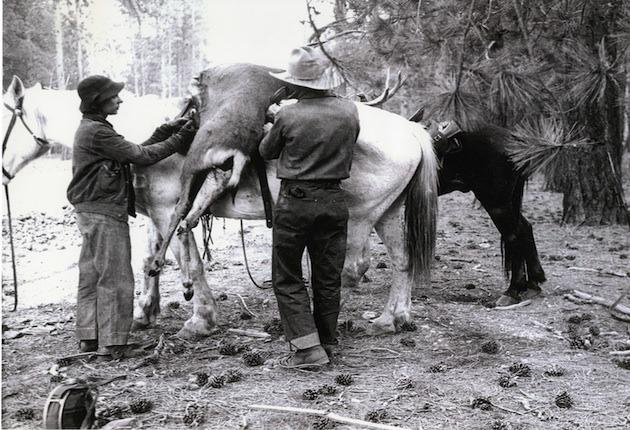Every hunter, I suppose, has his favorite deer country. For my part, I have hunted deer over a vast area, but if were I pinned down to just one locality, I’d pick the beautiful Kaibab Forest on the north rim of the Grand Canyon.
The Kaibab has what it takes to be one of the finest deer countries in the entire United States—beautiful scenery, a wide variety of country to suit both the still-hunter and the horse-hunter, and plenty of deer—big ones!
The next time you visit the Grand Canyon, look over toward the north rim, across the great colorful gorge. At the very top you’ll see a blue line above the spectacular reds and pinks of the canyon. Binoculars will show you that the blue is composed of trees—tall, thick conifers that are a part of Kaibab National Forest.
Suppose you are on the south rim near the famous El Tovar Hotel, where most tourists first glimpse the great canyon. You decide to investigate that forest for yourself, to see what the canyon looks like from the north rim. Well, an airplane can take you over in a few minutes, but if you want to drive there in your car, you’d have to travel more than 200 miles. Yet, if you’re a deer hunter, your reward will be worth the 200-mile drive.
Elsewhere in the United States, just about one deer hunter in ten gets his game. But records show that in the Kaibab, nine hunters out of ten come away with venison. Quite a difference! Kaibab regulations permit the killing of either bucks or does, but it’s venison nevertheless. Furthermore, the great plateau that forms the north rim of the canyon is largely limestone, and limestone bucks are the ones that grow the largest antlers.
A decade ago the Kaibab contained somewhere between 50,000 and 100,000 deer, far too many for its food supply, as the herd had been protected by the federal government since 1906. But starting in 1924 deer were trapped and hunted. Many starved in hard winters. Now, with an estimated 17,000 deer, the range is still excellent, and the Kaibab is producing some of the finest mule deer heads in the country.
Kaibab hunting varies greatly with the weather. If the fall has been clear and mild, hunting season will find the deer scattered all over the mesa, from the spruce and aspens of the summer range, to the open canyons of the winter range. Then a man usually has to work—and work hard—for his big buck. But if a heavy snow has fallen and the deer have abandoned the high country, hunting is relatively easy for the good shot. I have seen as many as 17 big bucks in one day in the Kaibab. On the other hand, I have hunted four days to see and kill one good one.
In the fall of 1937, when my wife and I reached the forest, bent on getting two bucks, we expected one of the hardest hunts of our experience. Actually, we had so much luck we were almost embarrassed by it.
All the way in on that late October day, we had heard discouraging reports. Hunters had been coming out with small bucks and does, some without any. The weather had been mild and the deer were scattered, wild, and hard to get. Some of the sob stories we listened to would wring your heart.
When we landed at the Moquitch camp, which is run by the famous lion hunter Jack Butler, we heard the same story. Only two big bucks had been brought into Moquitch. Few hunters had seen any.
“The Kaibab’s pretty tough this year,” Jack told me. “Better take the first really good buck you see. Shoot and shoot fast, as the big ones are up in thick timber and plenty broncho!”
The deer were scattered all over the mesa, but the guides agreed that we’d have to go 20 miles or more to the very top if we expected good heads. That night we mapped out our campaign with guide, Jimmy Lee. We’d ride to the top the next day, hunting on the way, and leave our horses in a corral at about 8,000 feet. Another guide would drive our car up and be waiting to bring us back. Then the second day we’d drive to our mounts in the car and start out after the big fellows. That was our plan, but by 9 o’clock the next day my wife had her buck.
We had started up a dim trail through a very deep canyon just before daybreak. We started seeing does and fawns as soon we began to climb. Coming out of a canyon, I saw three deer run out of a patch of brush at my right and disappear into a side canyon.
I hadn’t got off my horse, but something told me one of the deer was a buck …
To read the conclusion of this classic O’Connor hunt, pick up a copy of the Sept./Oct. 2015 issue of Sporting Classics on newsstands today, or subscribe here!
Note: “Grand Canyon Bucks” originally appeared in the September, 1938, issue of Outdoor Life.
A special thanks to O’Connor historian Eldon “Buck” Buckner for sharing the author’s photographs from his Kaibab hunt in October, 1937.


